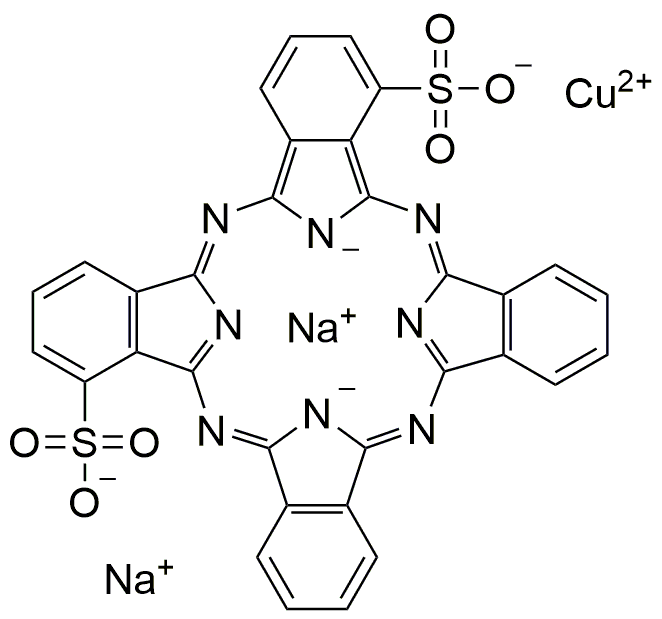Solvent Blue 38 is widely utilized in research focused on:
- Dyeing and Pigmentation: Commonly used in the textile industry, it provides vibrant blue hues to fabrics, enhancing their aesthetic appeal and marketability.
- Biological Staining: Employed in laboratories for staining biological samples, it helps in visualizing cellular structures under a microscope, aiding in research and diagnostics.
- Plastic Coloring: Utilized in the plastics industry, it imparts color to various plastic products, ensuring consistent quality and appearance in consumer goods.
- Cosmetic Applications: Incorporated in cosmetic formulations, it offers a safe and effective coloring agent for products like shampoos and lotions, improving their visual attractiveness.
- Environmental Monitoring: Used in analytical chemistry for tracking pollutants in water bodies, helping researchers assess environmental health and compliance with regulations.
General Information
Properties
Safety and Regulations
Applications
Solvent Blue 38 is widely utilized in research focused on:
- Dyeing and Pigmentation: Commonly used in the textile industry, it provides vibrant blue hues to fabrics, enhancing their aesthetic appeal and marketability.
- Biological Staining: Employed in laboratories for staining biological samples, it helps in visualizing cellular structures under a microscope, aiding in research and diagnostics.
- Plastic Coloring: Utilized in the plastics industry, it imparts color to various plastic products, ensuring consistent quality and appearance in consumer goods.
- Cosmetic Applications: Incorporated in cosmetic formulations, it offers a safe and effective coloring agent for products like shampoos and lotions, improving their visual attractiveness.
- Environmental Monitoring: Used in analytical chemistry for tracking pollutants in water bodies, helping researchers assess environmental health and compliance with regulations.
Documents
Safety Data Sheets (SDS)
The SDS provides comprehensive safety information on handling, storage, and disposal of the product.
Product Specification (PS)
The PS provides a comprehensive breakdown of the product’s properties, including chemical composition, physical state, purity, and storage requirements. It also details acceptable quality ranges and the product's intended applications.
Certificates of Analysis (COA)
Search for Certificates of Analysis (COA) by entering the products Lot Number. Lot and Batch Numbers can be found on a product’s label following the words ‘Lot’ or ‘Batch’.
*Catalog Number
*Lot Number
Certificates Of Origin (COO)
This COO confirms the country where the product was manufactured, and also details the materials and components used in it and whether it is derived from natural, synthetic, or other specific sources. This certificate may be required for customs, trade, and regulatory compliance.
*Catalog Number
*Lot Number
Safety Data Sheets (SDS)
The SDS provides comprehensive safety information on handling, storage, and disposal of the product.
DownloadProduct Specification (PS)
The PS provides a comprehensive breakdown of the product’s properties, including chemical composition, physical state, purity, and storage requirements. It also details acceptable quality ranges and the product's intended applications.
DownloadCertificates of Analysis (COA)
Search for Certificates of Analysis (COA) by entering the products Lot Number. Lot and Batch Numbers can be found on a product’s label following the words ‘Lot’ or ‘Batch’.
*Catalog Number
*Lot Number
Certificates Of Origin (COO)
This COO confirms the country where the product was manufactured, and also details the materials and components used in it and whether it is derived from natural, synthetic, or other specific sources. This certificate may be required for customs, trade, and regulatory compliance.


